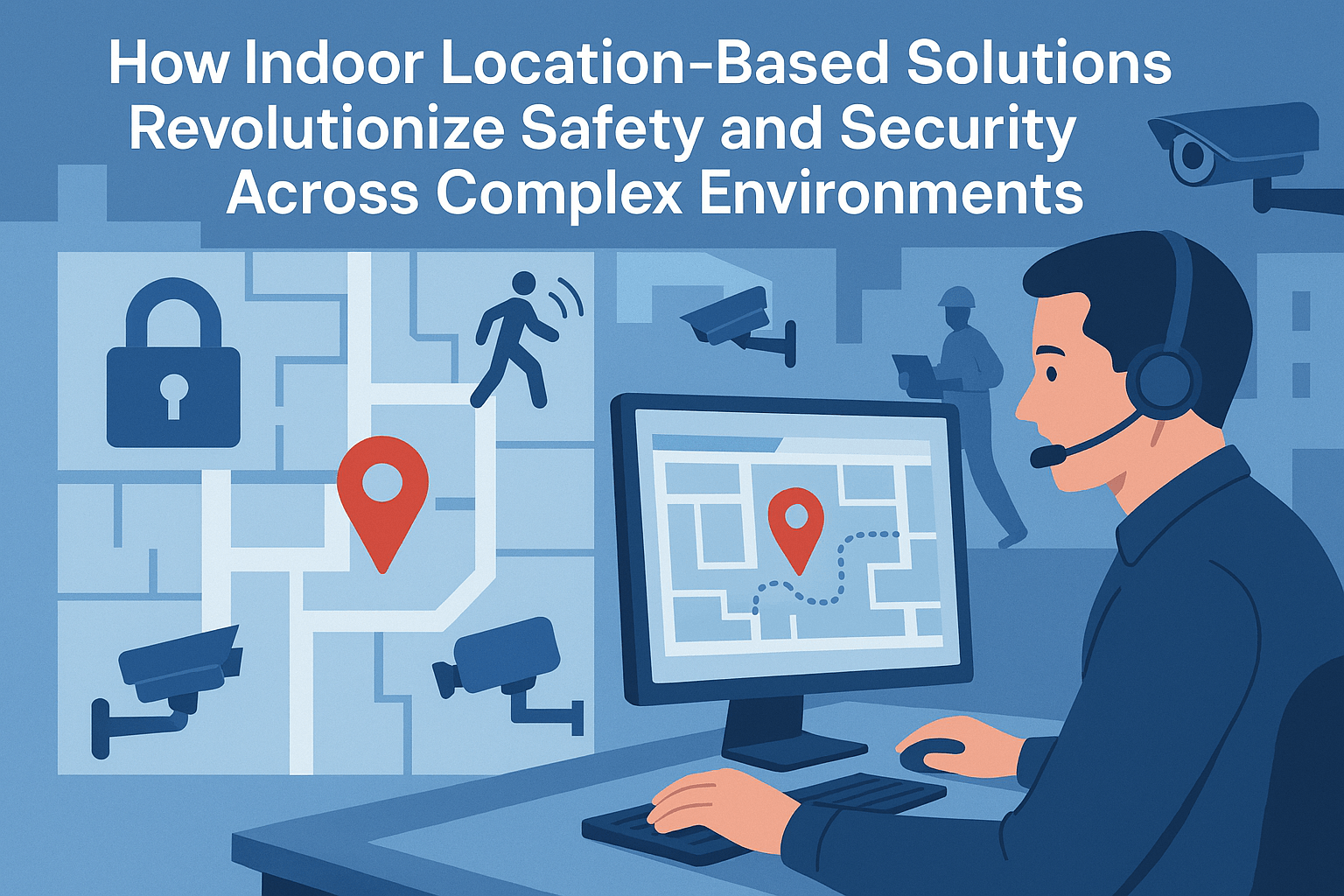


In a world where real-time responsiveness and proactive protection are becoming essential, indoor location-based solutions are emerging as a game-changer for safety and security. These technologies are not just about knowing where someone or something is—they are about unlocking a new level of efficiency, coordination, and peace of mind for all stakeholders.
From emergency management to lone worker protection, from securing children in large venues to protecting medical staff in critical situations—indoor geolocation can transform safety practices across diverse environments.

How Indoor Location-Based Solutions Revolutionize Safety and Security Across Complex Environments
During emergencies—such as fire outbreaks, medical incidents, or evacuations—indoor location systems provide critical real-time data. Real-time indoor geolocation improves evacuation safety by allowing operators to identify who is in the building, their exact location, and the safest exit routes. First responders are guided with pinpoint accuracy to those in need, dramatically improving response times and outcomes.
In industrial settings or sprawling campuses, lone workers face unique risks. With indoor location tracking, these workers can be monitored discreetly. If they experience distress, fall, or lose consciousness, alerts are instantly triggered and routed to the appropriate emergency teams, with their exact location attached. Lone worker safety systems powered by RTLS are essential for security and risk reduction.
Equipping staff with panic buttons or enabling duress alerts through mobile devices ensures that security personnel are alerted the moment a threat is perceived. This is crucial in environments like hospitals, where staff may face aggression, or in corporate offices, where threats must be handled swiftly.
In large and dynamic environments such as cruise ships, theme parks, and transportation hubs, tracking children or vulnerable individuals provides unparalleled peace of mind to caregivers and operators. Child safety tracking, anti-wandering systems, and passenger safety in transport hubs help prevent incidents before they escalate.
Medical staff safety, patient tracking, asset location, and anti-wandering features improve both operational efficiency and quality of care. Quick incident response and enhanced coordination across emergency teams save lives. Hospital RTLS systems reduce response times and protect frontline workers.
Guests—especially children—are easily tracked within large floating cities. Staff location improves service efficiency while enabling faster response during emergencies. Families relax knowing their loved ones are safe.
Indoor tracking of workers and assets boosts operational safety, while emergency response times are shortened significantly. Lone worker protection becomes a standard protocol rather than a challenge.
High-security environments benefit from real-time tracking of personnel and compliance monitoring. Any deviation from authorized zones can trigger alerts, ensuring robust perimeter security and operational control.
Office managers and facility operators can ensure employee safety, coordinate evacuations, and support seamless navigation for visitors. Space utilization analytics also improve efficiency.
In high-footfall, high-risk zones, indoor location enables better crowd control, staff coordination, and passenger safety. Security personnel can respond faster to threats or health incidents with precise indoor positioning.
By coordinating all stakeholders on a unified platform, indoor location-based solutions drastically streamline processes and foster a collaborative emergency response ecosystem.
As a leading indoor positioning system provider, Pole Star’s NAO Suite offers a unique proposition for any site looking to bolster safety and security:
Indoor location-based solutions are no longer a luxury—they’re a critical component of modern safety and security strategies. Whether protecting a nurse on a night shift, coordinating an evacuation in a transit hub, or ensuring a child’s safety on a cruise ship, real-time location intelligence transforms how we respond to risks and protect people.
With Pole Star’s flexible, high-performance NAO Suite, organizations can deploy a future-ready solution that safeguards what matters most—people, property, and peace of mind.
Pole Star’s technology has also been designed with integrators and resellers in mind. Its modular architecture, open APIs, and standardized protocols make it easy to embed into existing emergency management platforms, IT infrastructures, and security applications. This enables system integrators to quickly add value to their current solutions and deliver powerful indoor location capabilities without starting from scratch.
For resellers, NAO Suite provides a future-proof, multi-use case offering that scales across sectors—from healthcare to industry to transportation—ensuring long-term customer value and competitive differentiation.
Whether you’re a technology provider, integrator, or end-user, Pole Star’s ecosystem is built to empower you.
Let’s trace the way to safer, smarter spaces—together.
Need to know more ? Contact us